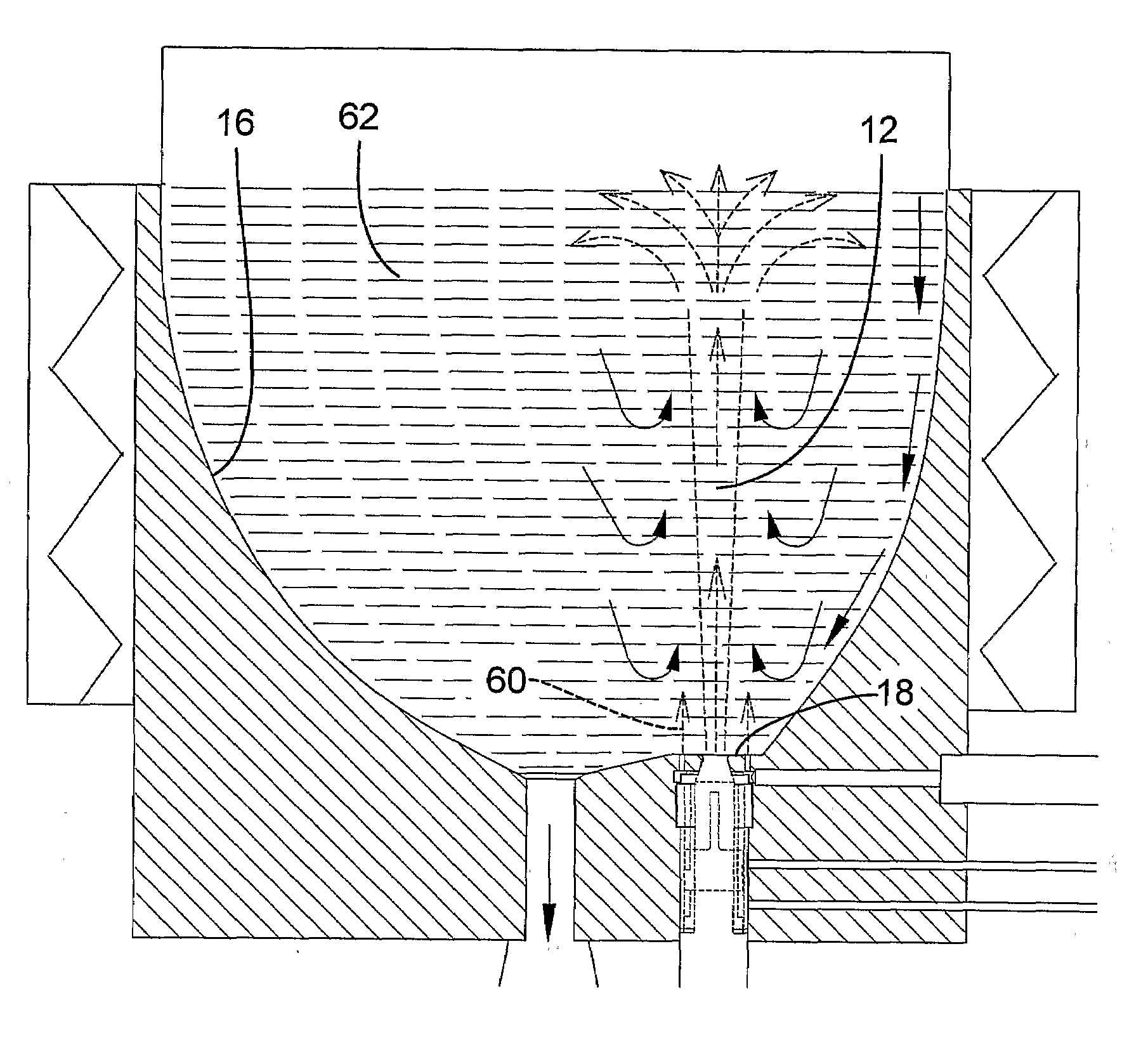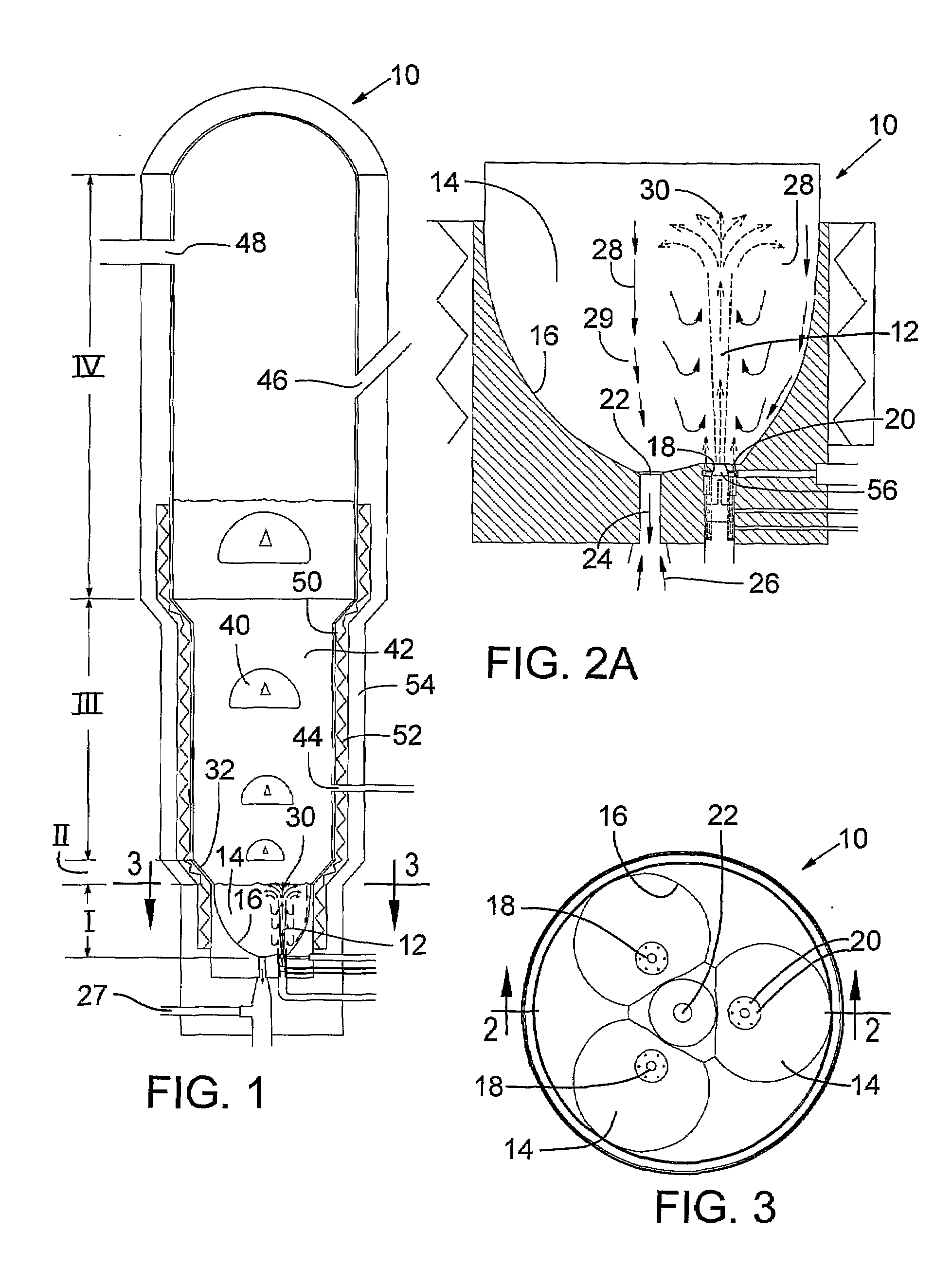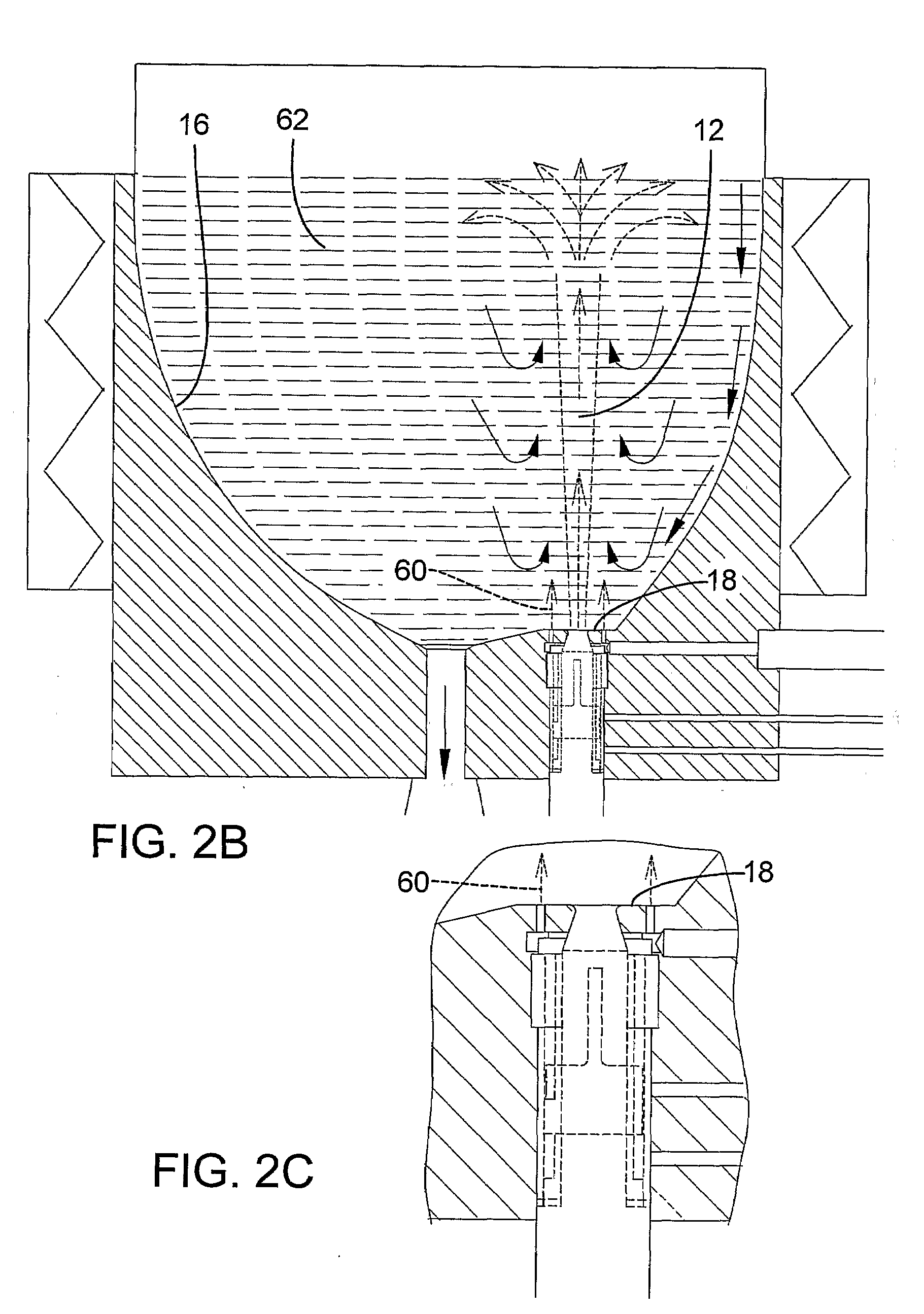Silicon Spout-Fluidized Bed
a technology of fluidized bed and silicon, which is applied in the direction of silicon compounds, coatings, chemistry apparatuses and processes, etc., can solve the problems of large energy consumption of processes, inability to meet the needs of distribution, and inherently unstabl
- Summary
- Abstract
- Description
- Claims
- Application Information
AI Technical Summary
Benefits of technology
Problems solved by technology
Method used
Image
Examples
example 1
Effect of Cooled Nozzle on Eliminating Dendrite Formation
[0066]The reactor system was an open configuration system with three spouts surrounding a common central outlet as illustrated in FIGS. 1-3. Each nozzle tip was water cooled to maintain a surface temperature not much above 100° C. Each spout nozzle was fed a mix of 600 slm hydrogen and 100 slm silane preheated to 300° C. About 100 slm hydrogen preheated to 200° C. was distributed to each set of six secondary orifices around the nozzles. The pressure in the freeboard region (IV) was controlled at 0.35 barg. The walls of the spout region were about 650° C. while the wall temperatures of the fluidized bed region were well above 700° C. Measured bed temperature was about 690-700° C. After several days operation there was no sign of deposition at or near the primary nozzles.
[0067]When nozzle cooling was turned off, significant deposition would occur in only a few days at the same conditions.
example 2
Effect of Secondary Gas on Protruding Nozzles
[0068]The reactor system was an open configuration as in Example 1 but with no cooling of the nozzle tips. The nozzles protruded a few inches into the spouts, as illustrated in FIG. 4B.
[0069]Each spout nozzle was fed a mix of 600 slm hydrogen and 100 slm silane preheated to 150° C. No hydrogen was distributed to the six secondary orifices surrounding each spout nozzle. The pressure in the freeboard region (IV) was controlled at 0.35 barg. The walls of the spout region (I) were heated above critical nucleation temperature but below Tamman temperature to minimize deposition while the wall temperatures of the fluidized bed region (III) are heated well above the Tamman temperature to promote scavenging and annealing of powder. Measured spout annulus temperature was 675° C., bed transition temperature was 690° C. and fluidized bed temperature was 710° C. When production was stopped after only a few days operation there was significant depositi...
example 3
Verification of Spout Penetration and Individual Spout Behavior
[0071]The reactor system was similar to Examples 1 and 2 but with a transparent plexiglas column instead of the reactor. The primary nozzle diameter was 0.375″ All flows were nitrogen at ambient temperature and pressure above bed was 0.2 atm.
[0072]The purpose of these tests was to verify spout penetration heights vs. literature correlations. The spout penetration flow was determined by increasing primary nozzle flow rate for a given particle size distribution and bed level. The flow at which spouts penetrated the bed would be the minimum flow for that spout height.
[0073]A first set of tests were with beads of average diameter 0.95 mm.[0074]1) 50 kg beads charged to the reactor yielding a stationary bed height of 45 cm.[0075]2) Total nitrogen flow to the three primary nozzles was varied between 1000 slm and 1700 slm while total nitrogen flow to secondary orifices was varied between 100 and 300 slm.[0076]3) After completin...
PUM
| Property | Measurement | Unit |
|---|---|---|
| angle | aaaaa | aaaaa |
| angle | aaaaa | aaaaa |
| angle | aaaaa | aaaaa |
Abstract
Description
Claims
Application Information
 Login to View More
Login to View More - R&D
- Intellectual Property
- Life Sciences
- Materials
- Tech Scout
- Unparalleled Data Quality
- Higher Quality Content
- 60% Fewer Hallucinations
Browse by: Latest US Patents, China's latest patents, Technical Efficacy Thesaurus, Application Domain, Technology Topic, Popular Technical Reports.
© 2025 PatSnap. All rights reserved.Legal|Privacy policy|Modern Slavery Act Transparency Statement|Sitemap|About US| Contact US: help@patsnap.com



